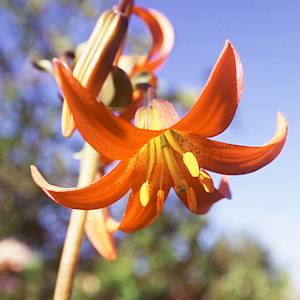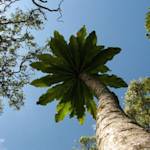Arran Service Tree
2024 CE • Scotland
"The Arran Service Tree, or Sorbus arranensis, is a beautiful and rare species of tree that is native to the Isle of Arran in Scotland. This tree is part of the rose family and is closely related to the rowan tree, which is also commonly found in Scotland . . . The tree produces clusters of small, round berries that start off green and turn bright red as they ripen. These berries are a valuable food source for birds, which helps to spread the tree's seeds and ensure the continued growth of the species. The Arran Service Tree is . . . [an] endangered species, with only around 250 individual trees known to exist in the wild. The main threats to the tree are habitat loss and fragmentation, as well as the introduction of non-native species that can outcompete the Arran Service Tree for resources . . . In addition to its ecological significance, the Arran Service Tree also has cultural and historical importance. In Scottish folklore, the tree was believed to have magical properties, and was often associated with fairies and other supernatural beings. It was said that the berries of the Arran Service Tree had the power to ward off evil spirits, and that the wood of the tree was used to make magical wands and staffs. The Arran Service Tree also has a long history of traditional use in Scotland. The berries were once used to make a type of wine known as "sorrel," and were also used in the production of a tart jelly. The wood of the tree was prized for its strength and durability, and was used in the construction of houses, furniture, and tools . . . Despite its rarity and unique status, the Arran Service Tree is still at risk of extinction. In addition to the threats of habitat loss and fragmentation, the tree is also vulnerable to disease and climate change."
Aaron Kitching, "Arran Service Tree, Sorbus arranensis" Wild Flower Web.
Image: Roger Griffith, Public domain, via Wikimedia Commons


Learn about Maya Lin’s fifth and final memorial: a multi-platform science based artwork that presents an ecological history of our world - past, present, and future.

Discover ecological histories and stories of former abundance, loss, and recovery on the map of memory.

Learn how we can reduce our emissions and protect and restore species and habitats – around the world.

See how art can help us rethink the problems we face, and give us hope that each one of us can make a difference.

Help make a global memorial something personal and close to home. Share your stories of the natural world.


